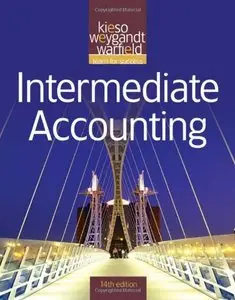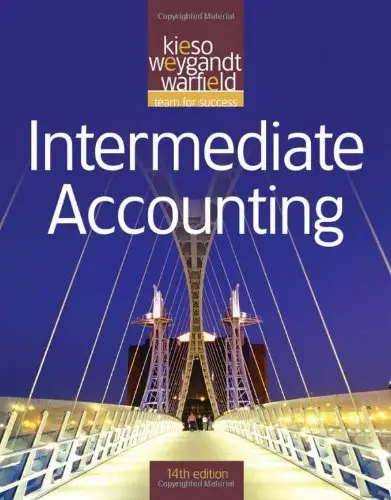Donald E. Kieso, Jerry J. Weygandt, Terry D. Warfield, "Intermediate Accounting, 14th Edition"
English | 2011-03-15 | ISBN: 0470587237 | 1640 pages | PDF | 112 MB
English | 2011-03-15 | ISBN: 0470587237 | 1640 pages | PDF | 112 MB
The bestselling book on intermediate accounting, Kieso is an excellent reference for practicing accountants and an invaluable resource for anyone entering the field. They’ll learn how to leverage everyday accounting programs like Excel, GLS, and other computerized accounting software giving them a strong background in the tools needed in the accounting profession. Intermediate Accounting 14th Edition is the market leader in providing the tools needed to understand what GAAP is and how it is applied in practice.
Through many editions, this textbook has continued to reflect the constant changes taking place in the GAAP environment. This edition continues this tradition, which has become even more significant as the financial reporting environment is exploding with major change. There are three areas of major importance that are now incorporated extensively into the text: New way of looking at GAAP, Convergence of U.S. GAAP and IFRS, and Fair Value Movement. The core of Kieso’s value statement continues to be authoritativeness and preparation for the profession (CPA exam).
Relevant Facts about International Financial Reporting Standards (IFRS)
-International standards are referred to as International Financial Reporting Standards (IFRS), developed by the International Accounting Standards Board (IASB). Recent events in the global capital markets have underscored the importance of financial disclosure and transparency not only in the United States but in markets around the world. As a result, many are examining which accounting and financial disclosure rules should be followed.
-U.S. standards, referred to as generally accepted accounting principles (GAAP), are developed by the Financial Accounting Standards Board (FASB). The fact that there are differences between what is in this textbook (which is based on U.S. standards) and IFRS should not be surprising because the FASB and the IASB have responded to different user needs. In some countries, the primary users of financial statements are private investors; in others, the primary users are tax authorities or central government planners. It appears that the United States and the international standard-setting environment are primarily driven by meeting the needs of investors and creditors.
-The internal control standards applicable to Sarbanes-Oxley (SOX) apply only to large public companies listed on U.S. exchanges. There is a continuing debate as to whether non-U.S. companies should have to comply with this extra layer of regulation. Debate about international companies (non-U.S.) adopting SOX-type standards centers on whether the benefits exceed the costs. The concern is that the higher costs of SOX compliance are making the U.S. securities markets less competitive.
-This textbook mentioned a number of ethics violations, such as WorldCom, AIG, and Lehman Brothers. These problems have also occurred internationally, for example, at Satyam Computer Services (India), Parmalat (Italy), and Royal Ahold (the Netherlands.)
-IFRS tends to be simpler in its accounting and disclosure requirements; some people say more “principles-based.” GAAP is more detailed; some people say more “rules-based.” This difference in approach has resulted in a debate about the merits of “principles-based” versus “rules-based” standards.
-The SEC allows foreign companies that trade shares in U.S. markets to file their IFRS financial statements with reconciliation to GAAP.



